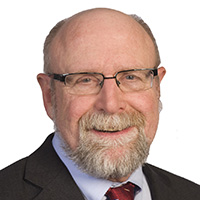Session 4: Achieving Livable Cities Through Hospitals in the Urban Habitat

Douglas King
Principal
Stantec Ltd., Chicago
Through exploring the convergence of theories on population health management and of livable cities initiatives, two approaches are identified that emphasize the growing presence of non-traditional healthcare providers in providing healthcare services. Healthcare providers, civic leadership and non-traditional providers can work together to coordinate community health goals, providing more effective wellness opportunities and a reduction in healthcare costs.
For many years, placemaking trends and trendsetters have explored concepts with the goal of achieving livable cities. Simultaneously, healthcare systems have been exploring how to reach out to the communities they serve. Challenges include overcoming inequity in healthcare access, motivating populations to take steps towards healthy living, determining ROI on strategies, and achieving a reduction in healthcare costs. The drivers in the livable city concept stem from civic interest in attracting and retaining residents and businesses to fuel economic development. The motivating factors for healthcare institutions involve responding to changes in healthcare reimbursement (moving from a service fee to a proactive care model). The goal is improved community health and preventing the development of costly chronic illnesses.
Providing community health is explored from three perspectives: the healthcare provider and how they can address changes in reimbursement; community leadership and how they can incorporate the growth of livable city concepts, and non-traditional healthcare providers entering the reimbursable healthcare market. Peripheral to this conversation are discussions on how communities can promote wellness in the urban habitat.
